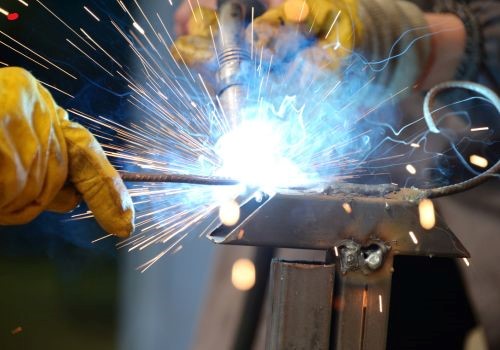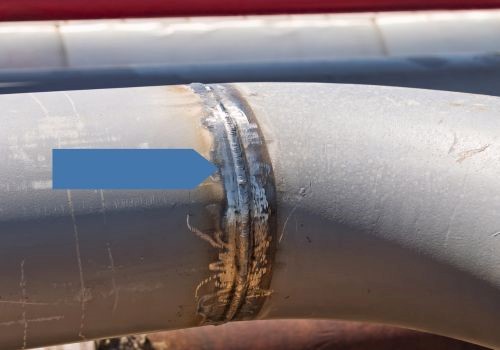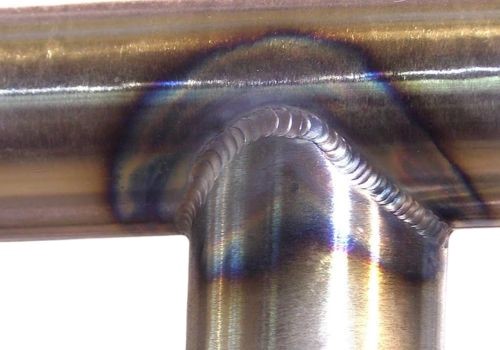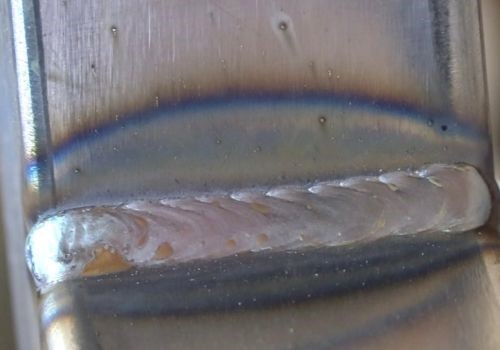Tube welding is a technique that has been in practice since the beginning of the 20th century. There have been many advancements in aspects and technologies that have adapted to the rapidly evolving market requirements.
In this guide, we will explore everything about welding tubes – let’s dive right in.
What is Tube Welding?
Tube welding is a process of linking various metallic tubes by applying different welding techniques. You will find tube welding in common use as a structural strategy in various manufacturing and construction industries.

The whole point of tube welding is to achieve very clean and sound seals between the joined metal tubes. Based on their application, you are able to achieve a structure that can sustain extreme forces even in the most rugged application environments.
Benefits of Tube Welding
Tube welding can offer you a number of key benefits compared to other forms of welding. Some of the gains you can achieve include:
- Strength and Durability: you are assured of mechanically strong tube weld joints that are resilient to high temperatures and pressure.
- Leak-Proof Joints: welding involves cracking and joining two or more metal tubes to create a continuous part. Tube welding ensures that such parts are leakage-free to prevent fluid or gas from escaping.
- Versatile: you can carry out tube welding on tubes made of various materials such as copper, stainless steel, or aluminum
- Cost-effective: once you have performed tube welding, the extent of other fittings and connectors is greatly minimized. This reduces your overall operational costs
- Aesthetic Appeal: you can achieve an even smooth tube surface that can give your final part an enticing visual appeal
- Improved Flow: since the welded surfaces have a smooth and streamlined finish, turbulence and fluid resistance are eliminated during fluid flow
Types of Welded Tubes
You can find welded tubes fabricated in different lengths and diameters with others having specialized ends depending on application. Some of the most common welded tubes you can find in the market include:

- Round Tubes: with a circular cross-section, you can weld them for applications in industries such as aerospace, automotive, or in the piping of buildings.
- Square Tubes: popularly used in load-bearing and construction applications. Their optimal strength enables you to comfortably weld them with ease of joining.
- Rectangular Tubes: we commonly tube-weld them for framework applications, structural supports, and other mechanical purposes.
- Boiler Tube Welding: you can use these welded tubes in industrial boilers where they are subjected to extremely high temperatures and pressure
- Tubes to Tube sheets: this involves welding your tube to a tube sheet most common in applications involving heat transfer such as heat exchangers.
Techniques for Welded Tubes
Let us look at some of the techniques that you can apply when tube welding:
- Tungsten Inert Gas (TIG) Welding: best for thin tubes where you use an inert gas and tungsten electrode to precisely weld the tube interfaces
- Metal Inert Gas (MIG) Welding: best for thick metal tubes where you use an inert gas and a wire electrode to join the tubes using a high-deposition weld
- Shielded Metal Arc Welding: very versatile when used for heavy fabrication and uses an electrode coated with flax to join the tube interfaces
- Orbital Welding: normally applied in complex tube structure welding. You create a weld joint by automatically rotating the welding head around the tube
- Laser Welding: best suited for very small or delicate tube components. You have to focus a laser beam precisely on the tube joints with minimal heat dissipated.
Tube Welding Process

There are various steps that you need to systematically follow to come up with an efficient tube welding. Let us have a look at this process step by step:
- Prepare the tube joints to be welded by properly cleaning them following the guidelines for each tube material. Scrap off any unnecessary coatings such as rust or paint to prevent welding defects
- You can align the joints with each other and then fix the tubes using tack welding. These are small welds that you can apply to temporarily hold the structural framework
- Based on your material specifications, you can complete a full tube welding using the most appropriate technique. You can start it off with root passes followed by hot passes and finalizing it with the welding fill and a final cap pass.
- Carry out a final inspection of the tube welding based on industry practices to ensure you have met the required standards. You can repair any defects and correct any other anomalies such as the alignment of the tubes.
Weld Passes Used in Tube Welding
We can describe weld passes as the deposits of weld metal that you place on the tube weld joint that create a solid weld between the surfaces. They ensure that the joint interfaces form a continuous weld mass.
Let us dive into some of the notable weld passes that you can apply to your tube welding:
- Root Pass: the first interaction of the tube interfaces that creates the initial degree of bonding between them
- Hot Pass: it enhances the root pass by affixing it to the joint interface of the tubes
- Fill Pass: they fill up the grooves by accumulating the weld thickness
- Cap Pass: it completes your tube weld. If there is accumulated contamination, you can grind off this cap before applying the finishing cap pass.
Best Tube Welding Materials
When you are carrying out tube welding, you need to select the most appropriate material based on your application requirements. We can briefly analyze some of the best materials suitable for tube welding:
- Stainless Steel: with its enhanced corrosion resistance backed by sheer strength, it is one of the materials commonly applied
- Carbon Steel: this composite material offers you a high strength with enhanced versatile characteristics for tube welding
- Aluminum: it is very light in weight besides having an impressive resistance to corrosion
- Copper: it has very low melting temperatures and high thermal conductivity features
Tube Welding Positions
You can carry out tube welding from four different positions which define whether your pipe workpiece is stationary or rotating. Let’s dig deep into each of them in detail:
- Horizontal Position (1G Welding): with your tube in this position, you can weld it by rotating it along a horizontal axis. This basic position involves welding to the top of the tube.
- Vertical Position (2G Welding): with your tube placed upright, you can weld it on the side horizontally by rotating it along the vertical axis.
- 5G Welding: your tube is placed in a horizontal position but is stationary. This means that you have to move around it to create vertical welds.
- 6G Welding; the tube you are welding has to be fixed at a 45° angle of slope. This advanced welding position requires you to move around the tube to create the welds.
Tube Welding Problems and Solutions
There are various steps that you need to systematically follow to come up with an efficient tube welding. Let us have a look at this process step by step:
- Prepare the tube joints to be welded by properly cleaning them following the guidelines for each tube material. Scrap off any unnecessary coatings such as rust or paint to prevent welding defects
- You can align the joints with each other and then fix the tubes using tack welding. These are small welds that you can apply to temporarily hold the structural framework
- Based on your material specifications, you can complete a full tube welding using the most appropriate technique. You can start it off with root passes followed by hot passes and finalizing it with the welding fill and a final cap pass.
- Carry out a final inspection of the tube welding based on industry practices to ensure you have met the required standards. You can repair any defects and correct any other anomalies such as the alignment of the tubes.
Weld Passes Used in Tube Welding
We can describe weld passes as the deposits of weld metal that you place on the tube weld joint that create a solid weld between the surfaces. They ensure that the joint interfaces form a continuous weld mass.
Let us dive into some of the notable weld passes that you can apply to your tube welding:
- Root Pass: the first interaction of the tube interfaces that creates the initial degree of bonding between them
- Hot Pass: it enhances the root pass by affixing it to the joint interface of the tubes
- Fill Pass: they fill up the grooves by accumulating the weld thickness
- Cap Pass: it completes your tube weld. If there is accumulated contamination, you can grind off this cap before applying the finishing cap pass.
Best Tube Welding Materials
When you are carrying out tube welding, you need to select the most appropriate material based on your application requirements. We can briefly analyze some of the best materials suitable for tube welding:
- Stainless Steel: with its enhanced corrosion resistance backed by sheer strength, it is one of the materials commonly applied
- Carbon Steel: this composite material offers you a high strength with enhanced versatile characteristics for tube welding
- Aluminum: it is very light in weight besides having an impressive resistance to corrosion
- Copper: it has very low melting temperatures and high thermal conductivity features
Tube Welding Positions
You can carry out tube welding from four different positions which define whether your pipe workpiece is stationary or rotating. Let’s dig deep into each of them in detail:
- Horizontal Position (1G Welding): with your tube in this position, you can weld it by rotating it along a horizontal axis. This basic position involves welding to the top of the tube.
- Vertical Position (2G Welding): with your tube placed upright, you can weld it on the side horizontally by rotating it along the vertical axis.
- 5G Welding: your tube is placed in a horizontal position but is stationary. This means that you have to move around it to create vertical welds.
- 6G Welding; the tube you are welding has to be fixed at a 45° angle of slope. This advanced welding position requires you to move around the tube to create the welds.
Tube Welding Problems and Solutions

Whether you are just starting or are a refined tube welder, you need to be well-versed in these problems and how to go about them. Let’s dive straight in.
i. Porosity
These are tiny holes that are caused by trapped gas or poor shielding gas coverage when welding or by contaminants on the tube surface. You can avoid this by cleaning the tubes before welding, using a proper shielding gas, and avoiding welding in humid conditions.
ii. Cracking
The strength of your tube weld can be compromised when you apply too much weld heat or uneven cooling techniques. You have to choose a welding material that is compatible with your welding technique and manage your heat input with controlled cooling.
iii. Incomplete Fusion
This happens when the interfaces of the weld tubes have an improper fusion with gaps between the weld passes. To avoid this, ensure you use sufficient heat input while welding with a steady and proper angle with no gaps or misalignment between the interfaces.
iv. Distortion
This is when your tube workpiece bends or warps when you use excess welding heat or an incorrect welding sequence. You can control the heat input you use for welding and use welding fixtures to properly align the tubes you are welding.
v. Spatter
These are tiny droplets of molten metal that tend to stick to the tube surfaces after you are done tube welding. You can avert this by lowering your welding current or regulating the gas mixture of your shielding gas.
Testing Your Tube Welding
If you want to guarantee the quality and integrity of your tube welding, then you have to subject it to some common testing methods. Here is a list of some of them:
- Carry out a visual inspection to identify any surface defects such as incomplete fusions or any form of cracks
- You can use X-rays to carry out radiographic tests that can point out any internal defects
- Soundwaves can also be used as a form of ultrasonic testing when you want to point out any subsurface deformities
- To ensure that there are no leakages, you blow compressed air into the tube welding
Best Practice for Correct Tube Welding
To obtain the best tube welding, you can try out the following tips for efficient results:
- Ensure that your tubes are properly cleaned to eliminate any form of contaminants
- When welding, make sure your hand has a steady motion to produce uniform welds
- Welding fixtures can help to prevent distortions when you correctly use them to hold your weld tubes in position
- Regulate your heat input based on the material used to avoid overheating and distortion
- Settle for the most appropriate welding parameters that conform to your tube material such as current and voltage
Applications of Tube Welding
You can find tube welding applications across a wide range of industries where it is conveniently employed. Some of these notable applications include:
- In construction where you can engineer them for structure construction, guards, and other supporting facilities
- In the automotive industry for the manufacture of exhaust systems, roll cages, and a variety of vehicle chassis
- Aerospace industry in the connection of aircraft and spaceship parts with the highest accuracy levels and tensile strength
- Power generation where boiler tubes and heat exchangers are welded to assist in boiler operations
- Oil and gas industry for building pipelines and ships that transport and store hydrocarbons
Tube welding is a very significant procedure across multiple industries that enhances the necessary mechanical features of metal tube structures. Whether you are going for boiler tube welding or even orbital welding, understanding the specificities can greatly improve your efficiency and safety.
Conclusion
After going through all that tube welding entails together with the associated problems, you can now weld structures that meet the industry requirements. You will also achieve durable welds and quality end products.
For all your tube welded parts from China, KDM is your trusted partner. For any inquiries, contact our engineers now.
More resources:
TIG Welding and Heliarc Welding – Source: KDM
MIG Vs TIG Welding – Source: KDM




